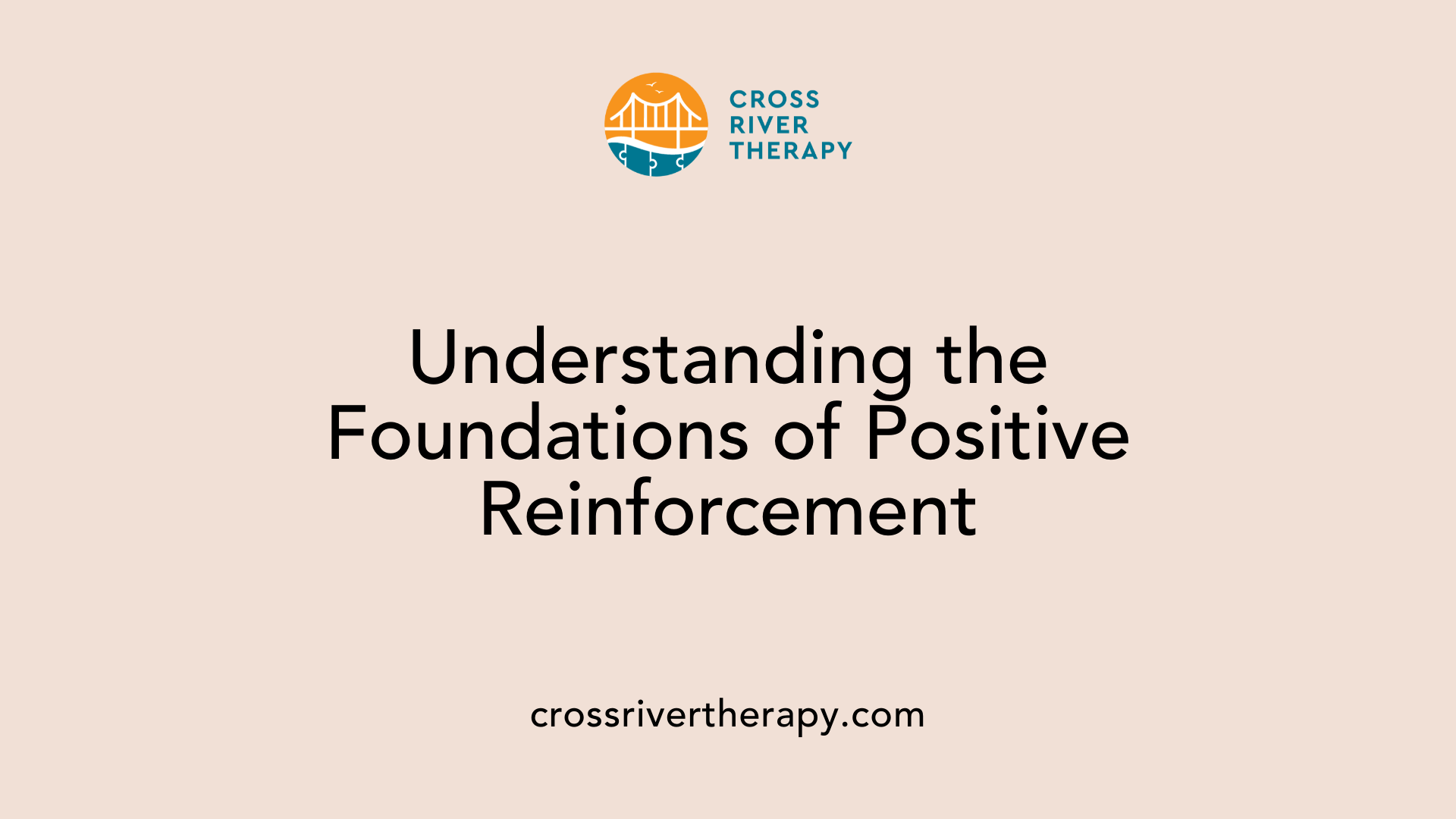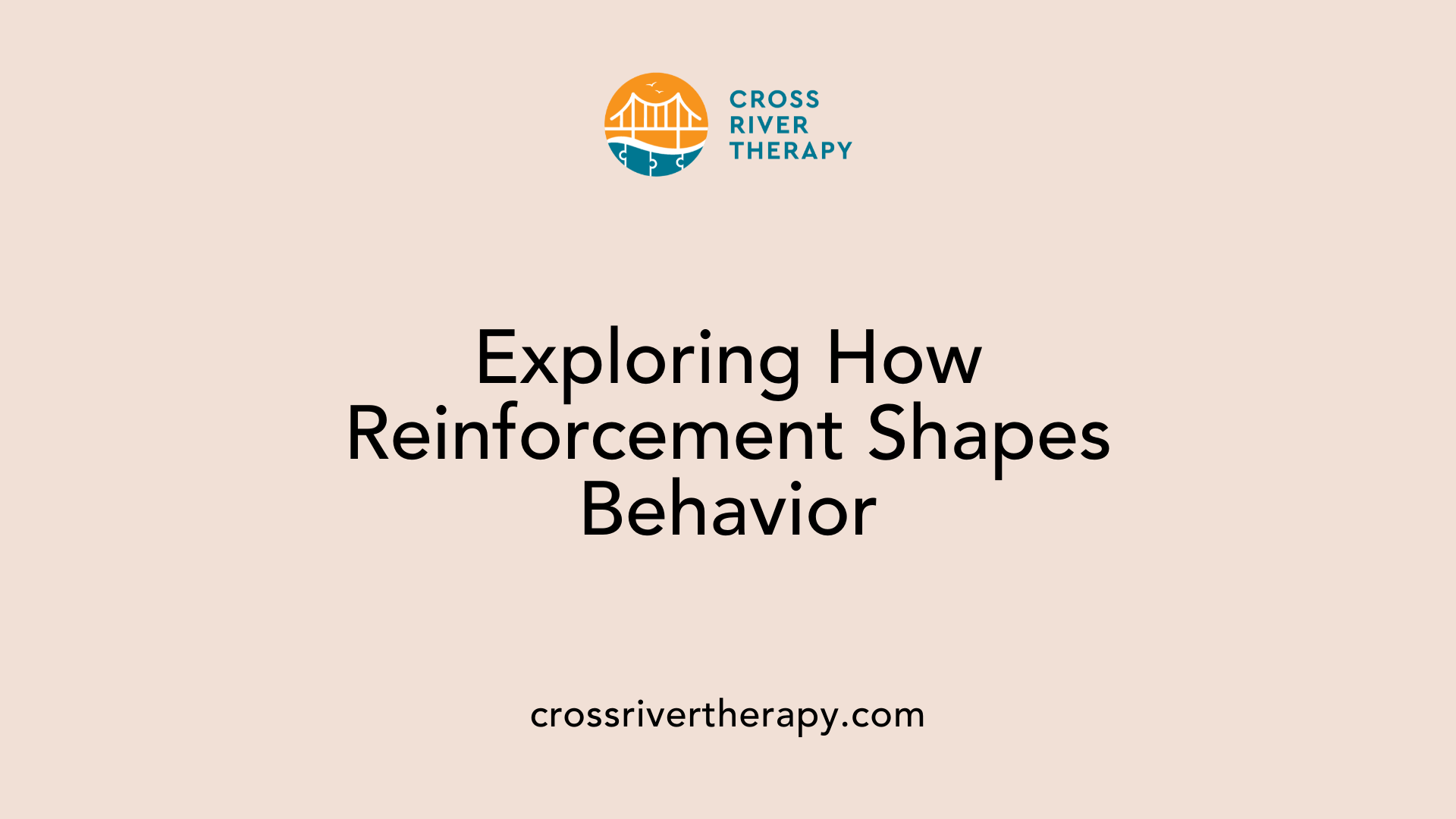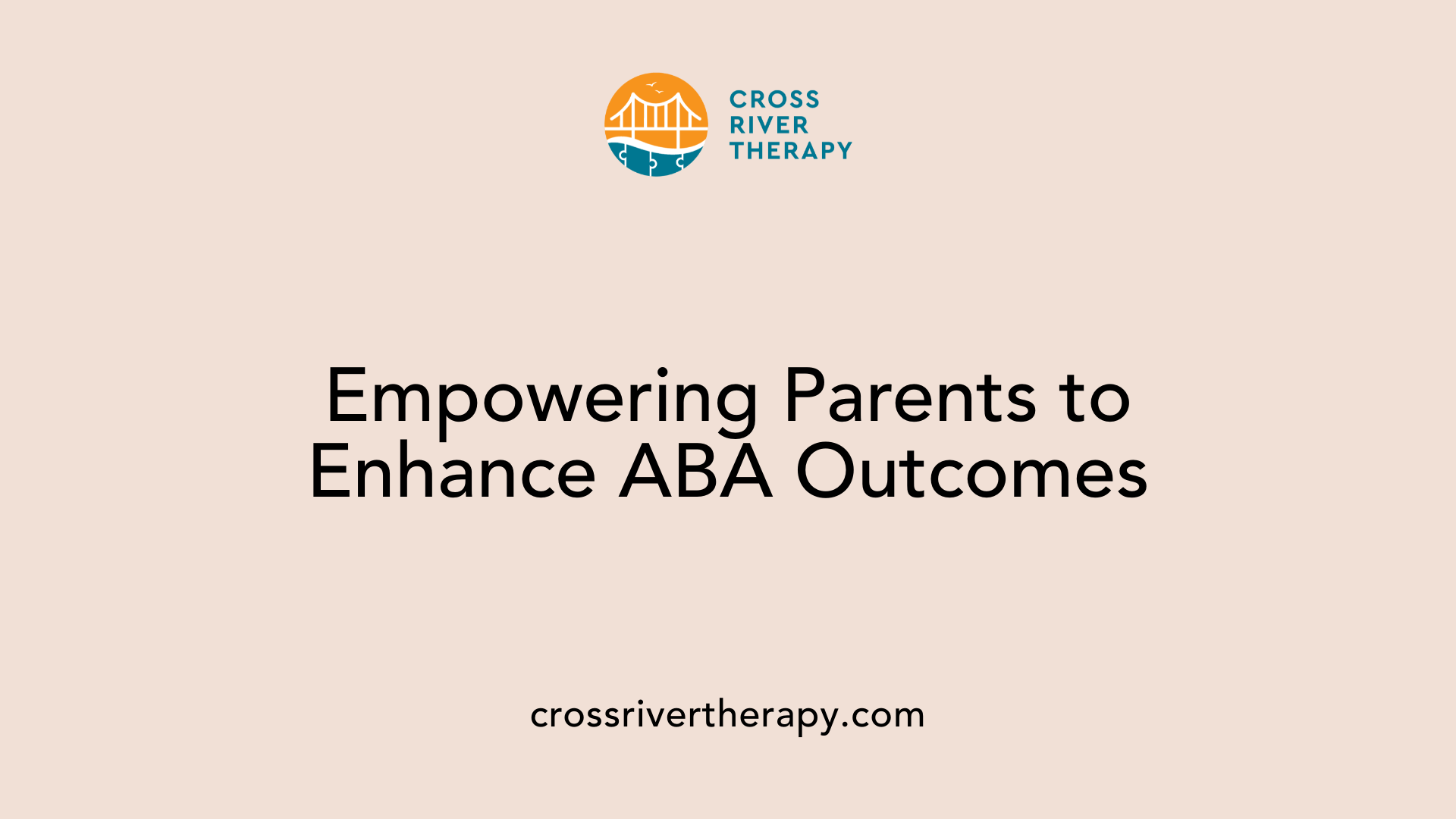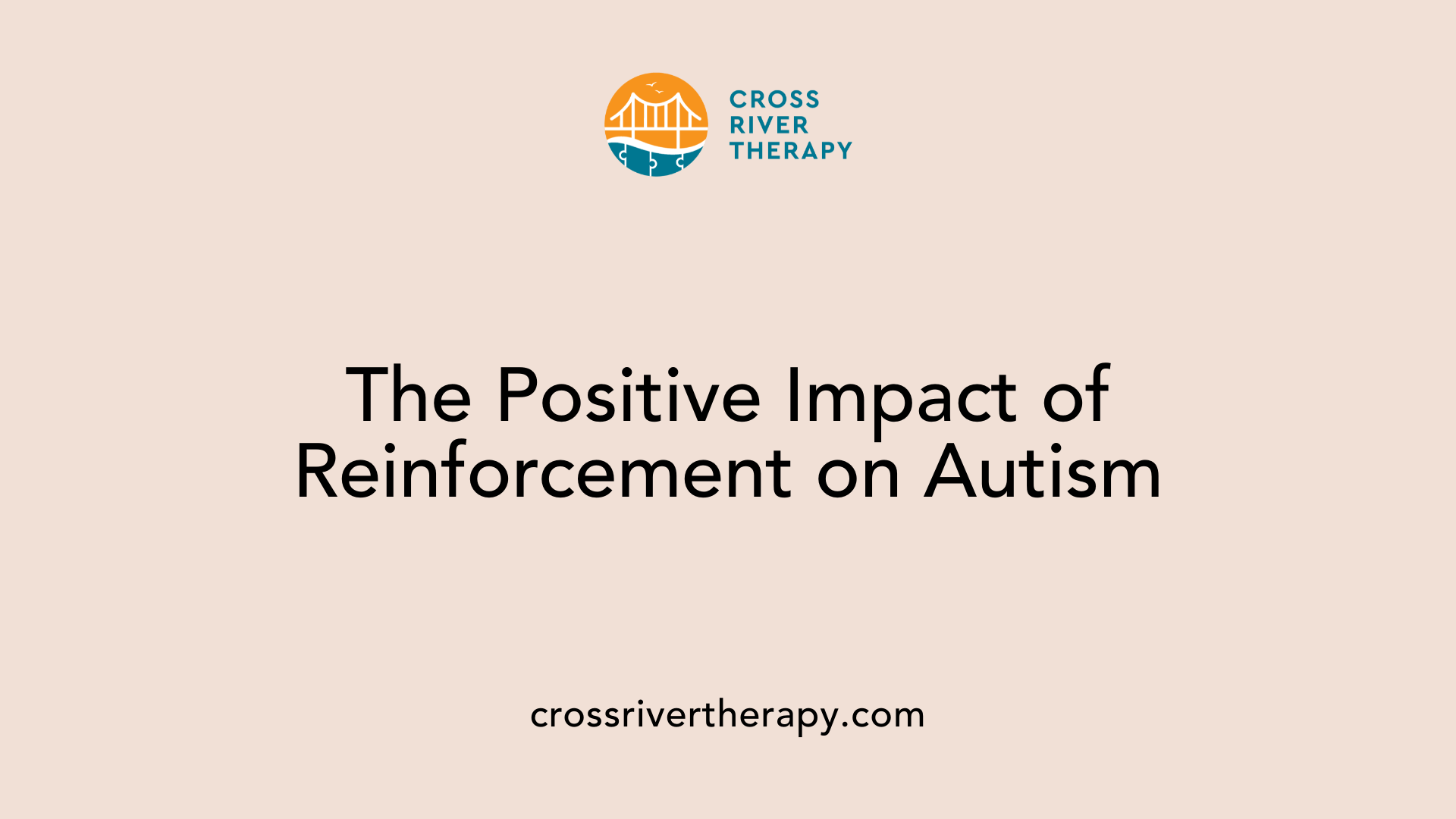Understanding the Role of Positive Reinforcement in ABA Therapy
Unpacking the Dynamics of Positive Reinforcement in Behavior Therapy
Introduction to Positive Reinforcement in ABA Therapy
Applied Behavior Analysis (ABA) therapy is a renowned approach primarily used to support individuals with autism spectrum disorder (ASD) and other developmental conditions. At its core, one integral component that sets this therapy apart is the use of positive reinforcement. This article explores the vital role that positive reinforcement plays within ABA therapy, tracing its roots back to B.F. Skinner's operant conditioning and examining its practical application and benefits across various contexts.
Defining Positive Reinforcement in the Context of ABA

Basic Definition of Positive Reinforcement
Positive reinforcement is a fundamental concept within Applied Behavior Analysis (ABA) that involves adding a rewarding stimulus following a desired behavior to increase the likelihood that the behavior will be repeated. For example, if a child completes their homework and is allowed to play a beloved game afterward, they are more likely to complete homework on time in the future.
Historical Roots in B.F. Skinner's Work
The theory of positive reinforcement stems from the experimental work of B.F. Skinner in the mid-20th century. His pioneering research in operant conditioning demonstrated that behaviors reinforced by positive outcomes are more likely to recur, while unreinforced behaviors tend to diminish. Skinner used devices like the Skinner Box to illustrate how reinforcement shapes behavior.
Application in Clinical Settings
In clinical settings, particularly those focusing on children with autism, positive reinforcement is crucial for teaching new skills and enhancing existing ones. Therapists utilize various forms of reinforcement—such as social praise, tangible rewards, or access to preferred activities—tailored to the distinct needs and preferences of each individual. This personalization ensures that the reinforcement provided is effective and promotes ongoing engagement in therapeutic activities.
Importance of Positive Reinforcement in ABA Therapy
Positive reinforcement is vital in ABA therapy as it encourages the learning of necessary skills and improves interactions, thereby fostering self-esteem and building confidence in children. These positive experiences not only contribute to behavior management but also support broader developmental milestones.
Mechanisms of Positive Reinforcement in ABA Therapy

Theoretical Principles of Behavior Modification
Positive reinforcement is rooted in B.F. Skinner's operant conditioning theory. This principle suggests that behaviors followed by positive outcomes are likely to be repeated. Essentially, when a desired behavior occurs and is immediately followed by a reward, the likelihood of that behavior recurring increases. Different types of positive reinforcement, including social praise, tangible rewards, and token systems, are systematically employed to promote desired behaviors.
Role in Shaping Behaviors
In Applied Behavior Analysis (ABA), positive reinforcement plays a critical role in shaping behaviors. Therapists use it to encourage learning by rewarding desired actions, which enhances motivation and self-esteem, particularly for individuals with autism spectrum disorder (ASD). For example, allowing a child to engage in a favorite activity after completing a task promotes future compliance and engagement. The immediacy of the reinforcement is key, as it helps students connect their actions to the rewards received, fostering long-term behavioral change.
Difference from Negative Reinforcement
Positive reinforcement differs significantly from negative reinforcement. While positive reinforcement adds a desirable stimulus following a behavior to encourage its recurrence, negative reinforcement involves removing an unpleasant stimulus to facilitate desired behavior. Understanding this distinction is crucial in ABA practices, as positive reinforcement focuses on rewarding positive behaviors rather than simply reducing or avoiding negative ones, which can create a more supportive and encouraging learning environment.
How Reinforcement Works in ABA Therapy
How does reinforcement function in ABA?
Reinforcement is central to Applied Behavior Analysis (ABA) therapy, focusing on strengthening behaviors through consequences. Specifically, positive reinforcement adds a desirable stimulus after a behavior, making it more likely to be repeated. Conversely, negative reinforcement removes an unpleasant stimulus to encourage desired actions.
The effectiveness of reinforcement relies heavily on its immediate delivery after the behavior. If the consequence is not provided right away, the connection between the behavior and the reinforcement may weaken, leading to less effective outcomes.
Key principles and processes
Effective reinforcement in ABA must be individualized. Personal preferences of the learner dictate which reinforcers work best, as not all rewards are effective for everyone. For instance, a child may respond well to verbal praise but may not find a specific toy rewarding.
Additionally, as learners gain skills, ABA practitioners typically transition from a continuous reinforcement schedule, where every occurrence of a behavior is rewarded, to an intermittent schedule. This change supports long-term behavioral maintenance and reduces reliance on external rewards.
Delivery and timing of reinforcement
Immediate reinforcement is crucial. For example, rewarding a child right after completing homework reinforces that specific action, encouraging them to repeat it. On the other hand, anything delayed can confuse the learner about which action prompted the reward.
Types of reinforcement used
Different types of positive reinforcement utilized in ABA include:
- Tangible Reinforcement: Physical items like toys or snacks.
- Social Reinforcement: Verbal praise or gestures that acknowledge success.
- Activity Reinforcement: Providing access to enjoyable activities as a reward.
- Token Reinforcement: Earning tokens that can be exchanged for desired items or experiences.
By focusing on the unique interests of each person and implementing effective reinforcement strategies, ABA therapy can successfully encourage positive behaviors and promote skill development.
Diverse Reinforcement Types in ABA Therapy
What are the types of reinforcement used in ABA therapy?
In Applied Behavior Analysis (ABA) therapy, various types of reinforcement play significant roles in shaping behaviors. Each type serves to encourage or discourage certain actions depending on individual needs and contexts.
Positive Reinforcement: This involves presenting a favorable stimulus after a desired behavior, which increases the likelihood of that behavior recurring. For instance, praising a child for finishing homework on time motivates them to repeat the behavior in the future.
Negative Reinforcement: Sometimes confused with punishment, this approach entails removing an unpleasant stimulus to promote positive behavior. For example, avoiding reprimands for being punctual encourages individuals to arrive on time.
Extinction: This method occurs when a behavior that was previously reinforced no longer receives reinforcement, leading to a decline in that behavior. For instance, if a child stops receiving attention for interrupting, the rate of interruptions may decrease.
Punishment: Different from the aforementioned methods, punishment aims to decrease undesired behaviors by applying negative consequences. For example, using a time-out when a child misbehaves seeks to deter that behavior.
The combination of these strategies, particularly positive reinforcement paired with extinction, often yields effective behavior modification outcomes. This tailored approach allows therapists to adapt based on individual preferences and circumstances, making therapy sessions more engaging.
Implementing Positive Reinforcement: Methods and Strategies

Techniques for Applying Positive Reinforcement
Positive reinforcement can be implemented through various techniques aimed at encouraging desirable behaviors. These include:
- Token Economies: Using tokens as a reward system that can be exchanged for a preferred item or activity, allowing for visual progress tracking.
- Discrete Trial Training: Breaking down skills into manageable steps and providing reinforcement for each successful attempt.
- Activity Reinforcement: Allowing access to preferred activities after completing less favored tasks, known as the Premack Principle.
Role of Individual Preferences
Understanding individual preferences is crucial in applying positive reinforcement effectively. The effectiveness of a reinforcer largely depends on the specific likes and dislikes of the learner. Therapists often conduct assessments to customize reinforcement strategies, ensuring rewards such as verbal praise, tangible items, or engaging activities are personalized to meet each individual's needs. This personalization enhances motivation and engagement in learning.
Examples from Educational Settings
In educational contexts, positive reinforcement is often applied to promote student participation and behavior. For instance, teachers may use social praise to acknowledge students for completing assignments or behaving well during class. Tangible rewards, such as stickers or extra playtime, can also serve as effective incentives for desired behaviors, fostering a positive learning environment that encourages ongoing engagement.
The Vital Role of Parents and Caregivers

Importance of Parent Involvement
Parents and caregivers are pivotal in Applied Behavior Analysis (ABA) therapy, especially concerning positive reinforcement strategies. Their active involvement can significantly enhance a child's learning trajectory. Studies indicate that engagement from parents leads to measurable improvement in children’s behavioral responses and overall progress in therapy.
Generalization of Skills
For skills learned in ABA therapy to be beneficial, they must transfer into daily life situations. Parents play an essential role in this process by utilizing consistent reinforcement during everyday interactions. When families implement ABA strategies at home, children are more likely to generalize the skills acquired in therapy to various contexts, fostering adaptability.
Training and Support for Parents
Training parents in ABA techniques is crucial for maximizing the effectiveness of positive reinforcement. It equips them with the skills to prompt, reinforce, and monitor their child's behaviors effectively. Moreover, a well-informed caregiver can create a collaboratory atmosphere that supports ongoing progress, ensuring that the child can thrive not just in structured sessions, but also in real-world applications. This approach not only benefits the child but also strengthens the family unit as a whole.
Exploring the Benefits and Effectiveness for Autism

Benefits for Individuals with Autism
Positive reinforcement plays a crucial role in supporting individuals with autism by encouraging desired behaviors and enhancing self-esteem. This technique rewards positive actions, like completing tasks or engaging socially, effectively motivating children with autism to participate in activities they might otherwise avoid. For instance, allowing a child to play after finishing homework reinforces timely task completion, promoting routine and responsibility.
Empirical Support for Effectiveness
Ongoing research in Applied Behavior Analysis (ABA) therapy indicates that positive reinforcement is vital for behavior modification. Studies show that children who receive consistent positive reinforcement exhibit significant improvements in social skills and daily living skills. The structure of ABA leverages various forms of reinforcement, such as verbal praise or tokens, tailored to individual needs, thereby increasing the likelihood of repeated positive behaviors. This individualized approach is supported by data collected during sessions, demonstrating measurable advancements.
Impact on Engagement and Development
The utilization of positive reinforcement fosters an engaging learning environment, which is essential for skill acquisition in children with autism. By focusing on rewarding appropriate behaviors instead of punishing undesired ones, educators and therapists create a more positive atmosphere. This approach not only enhances motivation but also encourages a sense of achievement among learners, ultimately supporting long-term behavioral change and adaptability into adulthood.
| Topic | Description | Importance |
|---|---|---|
| Benefits for Individuals with Autism | Encourages desired behaviors and builds self-esteem | Promotes participation and responsibility |
| Empirical Support for Effectiveness | Research confirms the success of reinforcement strategies | Measurable behavior improvements |
| Impact on Engagement and Development | Creates a positive learning atmosphere | Enhances motivation and skill acquisition |
Future Perspectives and Challenges
Long-term Impact of Positive Reinforcement
Positive reinforcement plays a significant role in shaping behavior, especially in children with autism. When utilized effectively, it fosters skill acquisition, encouraging individuals to repeat desirable behaviors long after therapy ends. These skills are often transferable, aiding adaptability in various life situations, and helping children thrive socially.
Challenges in Implementation
Despite its benefits, implementing positive reinforcement can present challenges. One major issue is the need for individualized reinforcement strategies. What works for one child may not work for another, necessitating a deep understanding of learner preferences. Additionally, many practitioners may struggle with maintaining consistency in the application of reinforcement techniques, which is crucial for their effectiveness.
Strategies for Overcoming Barriers
To address these challenges, ongoing training for ABA therapists is essential. Equipping them with knowledge on diverse reinforcement types and schedules can enhance their adaptability to individual needs. Moreover, engaging parents in the reinforcement process ensures consistency across settings, helping generalize behaviors learned during sessions into everyday life. Incorporating technology, like apps for tracking reinforcement, can also streamline implementation, making it easier to gather data vital for adjusting strategies to maximize effectiveness.
Concluding Thoughts
Positive reinforcement remains a cornerstone of ABA therapy, providing a structured and evidence-based approach to promoting and maintaining desirable behaviors. Its practical application, particularly for individuals with autism, highlights the necessity of rewarding positive actions to facilitate both immediate and long-term developmental gains. As the field of ABA continues to grow and adapt, ongoing research and refined strategies in positive reinforcement will continue to enhance therapeutic outcomes, ensuring that each individual's unique needs and preferences are met. In sum, when used effectively, positive reinforcement not only aids in skill acquisition but also fosters a supportive and nurturing environment conducive to lifelong learning and adaptability.
References
- ABA 101: Positive Reinforcement - Behavior TLC
- How Does ABA Therapy Utilize Positive Reinforcement?
- Reinforcement: What it is & Why it's Important to ABA
- Applied Behavior Analysis (ABA) | Autism Speaks
- The Role of Positive Reinforcement in ABA Therapy
- The Power of Positive Reinforcement in ABA Therapy
- Positive Reinforcement in ABA Therapy | Circle Care Blog
- How Is Positive Reinforcement Used in ABA Therapy?
- Parents' Role - Positive Reinforcement ABA Therapy, Inc.



